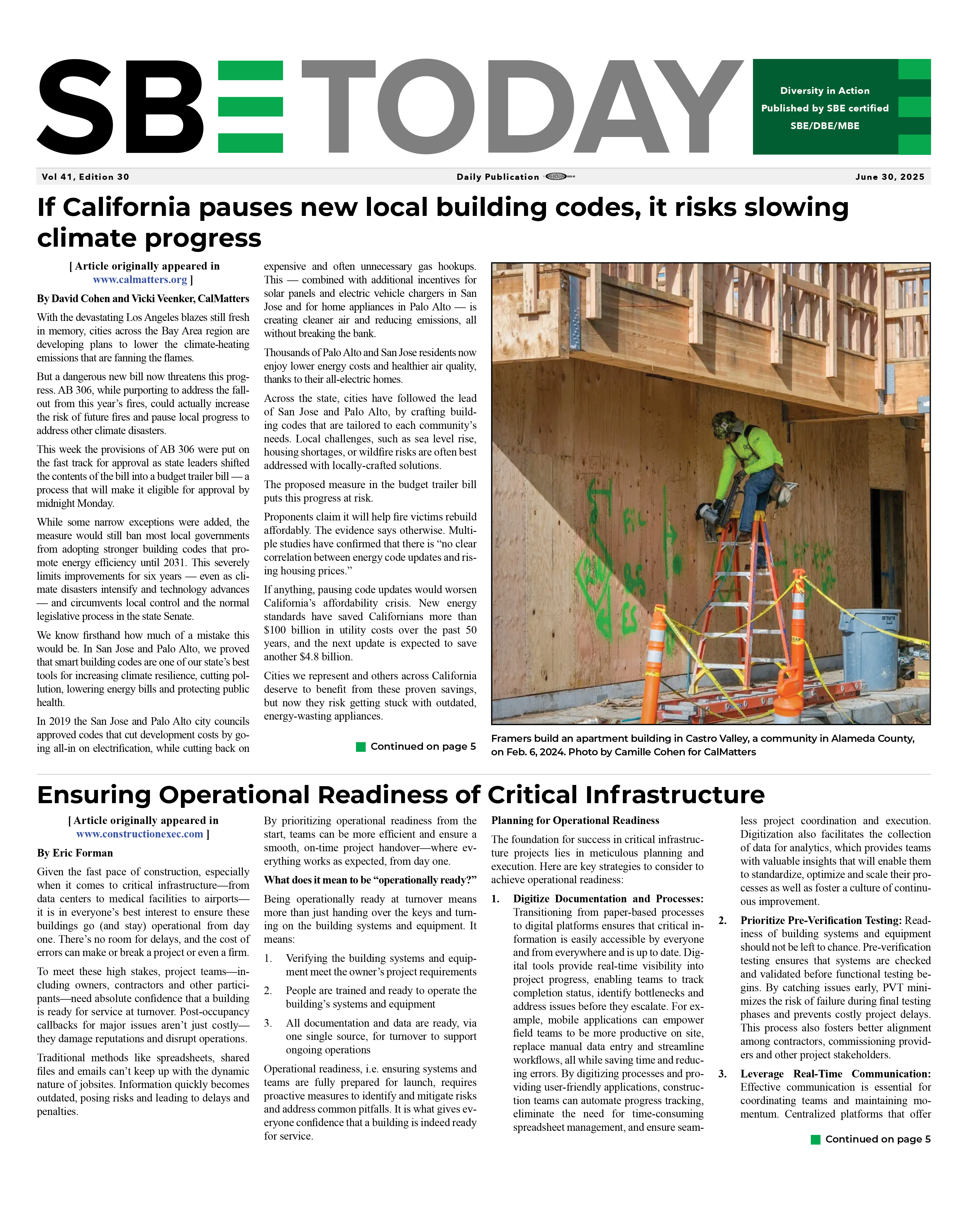|
|
Does OSHA Need a Heat Exposure Standard for Construction?
06/05/2019
From 1992 through 2016, there were 69,374 serious injuries and 783 deaths caused by exposure to excessive heat, per data from the Bureau of Labor Statistics. Of the 492 occupational fatalities attributed to exposure to environmental heat from 2003 to 2016, 179, or 36%, were in the construction industry. The petition also cited climate changes as a contributing factor for the need to establish a heat exposure safety standard. 2016 and 2017 where the two all-time hottest years on record. The petition also notes that the frequency of days with extreme heat has been increasing over the past several years. The petition requests that OSHA include the following items in a new safety standard to protect against heat exposure:
Establishing a New Heat Exposure Standard To set a new standard, OSHA can initiate the process on their own or in response to a petition filed by the Secretary of Health and Human Services (HHS), the National Institute for Occupational Safety and Health (NIOSH), or any other interested person or parties. If OSHA chooses to establish a new standard, a lengthy process begins that can take months or even years before a final rule is published. This isn’t the first time that an organization or agency has recommended or petitioned OSHA to initiate the rulemaking process to establish a heat exposure standard. Public Citizen petitioned OSHA to create a heat exposure standard back in 2011 and the NIOSH has recommended OSHA create a specific standard for preventing heat stress three times: in 1972, 1986, and most recently in 2016. Public Citizen’s petition was denied in 2011. As part of the reasoning behind the decision, OSHA explained that they did not find that exposure to extreme heat created a grave danger to employees, nor did it pose a high enough degree of risk to warrant establishing a permanent standard. One of the supporters of the current petition is Dr. David Michaels. Dr. Michaels was the director of OSHA when the agency denied Public Citizen’s initial petition. He claims that the health standards staff were already working on rulemaking for other standards at the time and didn’t have the manpower available to take on creating a standard for heat exposure. Dangers of Exposure to Environmental Heat Construction workers exposed to extreme heat can suffer a number of heat-related illnesses including heat rash, heat cramps, heat exhaustion, and heat stroke. Workers suffering from heat stroke who don’t receive immediate medical attention can die. Symptoms of heat exhaustion include headaches; dizziness; weakness; cold, pale or clammy skin; fast or weak pulse; nausea or vomiting and fainting. Not all these symptoms will necessarily be present if suffering from heat exhaustion. Symptoms of heat stroke include high body temperature (above 103°F); hot, red, dry or moist skin; difficulty breathing; confusion; seizure; heavy sweating; rapid and strong pulse and possible unconsciousness. Heat stroke is the most serious of the two main types of heat illness. Heat stroke can cause major damage to the brain, heart, liver, kidneys and muscles. Current Protections for Workers Even without a specific OSHA standard, employers should be doing everything they can to protect construction workers from heat-related illnesses. OSH Act’s General Duty Clause, Section 5(a)(1), states that “Each employer shall furnish to each of his employees employment and a place of employment which are free from recognized hazards that are causing or are likely to cause death or serious physical harm to his employees.” OSHA has also gone on record, in response to various inquiries for clarification to established rules, that their safety standards are the bare minimum of what employers should be doing to protect their workers. Other safety standards for construction that are relevant to protecting workers from extreme heat exposure include: 29 CFR 1926.21 – Requires employers to train construction workers on how to recognize and avoid unsafe conditions like exposure to extreme heat. 29 CFR 1926.28 – Employers must provide and require workers to use applicable personal protective equipment (PPE) to protect again exposure to hazardous conditions. 29 CFR 1926.50 – Employers are responsible for providing first aid and making provisions for prompt medical attention for serious injuries before beginning a project. 29 CFR 1926.51 – Employers must provide potable water at the jobsite or place of employment for workers to drink. Tips to Protect Construction Workers From Extreme Heat In addition to following the above-mentioned OSHA standards, employers can do the following things to help their construction workers understand the dangers posed by exposure to excessive heat and how to protect them from suffering heat-related illnesses:
Based on OSHA’s past refusal to establish a heat exposure standard, it seems unlikely that they will take up the cause this time around. This doesn’t mean that construction companies should ignore the dangers that exposure to extreme heat poses to their workers. In fact, measures to prevent heat-related illnesses should already be part of your company’s safety program and if it isn’t it should be added and enforced immediately. Back To News |
|





